James Buchanan Brady was born in a poor working-class section of New York City in 1856. He worked at his father's saloon, where he lived in such deprivation that he often went hungry for lack of food. This, it has been said, explains his notorious and excessive eating habits as an adult. His father was also an ardent Democrat, so he gave his son the middle name of Buchanan after James Buchanan who was elected President in 1856, the same year his son was born. James' father worked in cooperation with dishonest sea captains who were always on the look-out for men to "shanghai" (kidnap) and force to serve as sailors on long ocean voyages. "Knock-out drops" would be slipped into the drinks of unsuspecting men, and they would wake up the next day on a ship far out at sea.
As a result of this unsavory and poor upbringing, the eleven year old Jim ran away from home and within a few years landed a job as an equipment salesman for the New York Central Railroad. He developed into an extremely effective salesman, becoming very charming, affable and personable. Over the years he earned a reputation of being able to sell anything to anyone. His skill as a "super-salesman" translated into a great amount of money, and he began to live the life of a wealthy and successful individual. So,by the age of thirty he had accumulated a sizable fortune and could afford anything he wanted. He had earned a fortune on commissions from the sales he had generated and had wisely invested his money in various businesses until, eventually, he did not have to work at all. (Note: no income taxes were paid at this time.) Then, he turned to a life of excess and pleasure.
One of Jim's famous sayings was, "If you're going to make money, you have to look like money." He acquired a vast wardrobe of over 200 custom-made suits and 50 silk top hats. Mostly, though, Jim loved diamonds. He felt that a man without diamonds was a man without power. He sported a cane that had a 3 karat diamond imbedded in the knob of its head. He wore what were considered the largest diamond rings in the city of New York. In Jim's words, "Them as has 'em. wears 'em."
He wore as many diamonds as he possibly could. He wore diamond cuff links, diamond shirt studs, diamond encrusted belt buckles, diamond vest studs, diamond encrusted watches with large diamonds where the numbers on the face of the watch should have been. One of his many bejeweled watch chains weighed in at 83 emerald karats. The combined weight of one of his diamond rings and his favorite diamond scarf pin (each with only a single stone) was 58 karats.
It was said that when "Diamond Jim" walked down the streets of New York City at night, the electric lights made him glitter like a Christmas tree. When strolling along Broadway in the evening it was estimated that he was wearing on his person approximately 2,500 diamonds. This number may, or may have not, included the large number of small diamonds he carried in his pockets to give to waiters, servants and anyone else who pleased him with either good service or friendly words and conversation.
How excessive did Jim get in creating a lavish life style for himself? Three details reveal an answer. Jim played poker at his New York City home with poker chips made from onyx and mother of pearl. Each year Jim gave an interior decorator $750,000.00 to completely redesign and redecorate his mansion. He gave away his priceless furniture to friends, and spent hundreds of thousands of dollars on new furnishings. Finally, the cows on his farm in New Jersey were milked using gold-plated buckets.
In addition to diamonds, another love of Jim's life was food, and he indulged himself to the limit. Here is, according to story and legend, a typical daily menu consumed by "Diamond Jim" Brady:
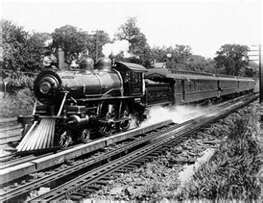 |
| New York Central R.R. engine. |
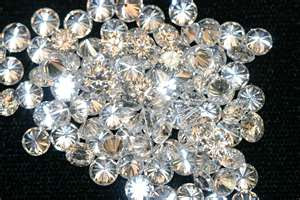 |
| "Diamond Jim" had 'em. |
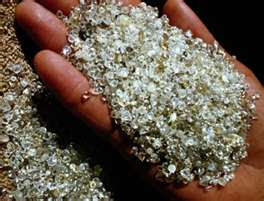 |
| Jim carried small diamonds in his pockets. |
 |
| Jim was no fool when buying jewelry. |
Jim was a shrewd businessman and accumulated much of his jewelry collection (he collected things other than diamonds as well) by visiting upper-end pawn shops to purchase whatever caught his eye. He was well aware that jewelry stores drastically marked up the price of diamonds. (Note: "A diamond is forever" is commonly credited with being the #1 advertising slogan of the 20th century. The slogan counters the fact that that diamonds are relatively common, not rare, and the high price charged for them reflects the enduring love the giver feels for the recipient. But, I digress.)
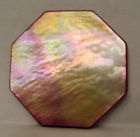 |
| Mother of pearl poker chip. |
Breakfast:
A large steak, pork chops and a plateful of eggs. This would be followed by a stack of pancakes with maple syrup, hominy grits and bacon, fried potatoes, cornbread and a half dozen muffins. He would wash down this meal with a pitcher of milk and a gallon of orange juice, Jim's favorite drink, since he consumed no alcohol of any kind.
Late Morning Snack:
Around 11:30 A.M., to tide him over until lunch, he would eat 2-3 dozen clams or oysters.
Lunch: 12:30 P.M. each day:
His usual fare included two broiled lobsters, more oysters, and deviled crabs. That would be followed up by a large steak, or joint of beef, 2 large portions of terrapin (turtle meat), and 2-3 pieces of fruit pie. For dessert (He wasn't finished yet!) he would enjoy a 2lb. box of chocolates - he said it helped settle his stomach!
Dinner:He would begin with approximately 30 oysters. Moving on, he would consume six crabs and then enjoy two bowls of green turtle soup. Then he would move on to the "main" courses, which would include 6 lobsters, a couple of canvasback ducks, and a steak with vegetables. This was followed by a tray of pastries, and, to finish it all off, his customary 2lb. box of chocolates. As usual, he washed down the entire meal with several quarts of orange juice. He never drank coffee, tea or alcohol.
Occasional Late Night Theatre Supper:
A few game birds and more orange juice.
How did Jim know when he had had enough to eat? He explained his eating strategy thus: "Whenever I sit down to a meal, I always make a point to leave 4 inches between my stomach and the edge of the table. And then, when I can feel them rubbin' together pretty hard, I know I've had enough."
 |
| "Diamond Jim" helped the Page and Shaw Candy Company expand - for selfish reasons. |
| I recommend this book. |
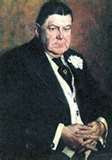 |
| A hefty Mr. Brady later in life. |
The third love of Jim's life was the internationally known singer and actress Lillian Russell. Born in Iowa, her talent and ambition made it possible for her to become one of the most famous singers and light comic actresses of her generation. Like Jim, she was a completely self-made person.
 |
| Lillian Russell |
Jim proposed marriage to Miss Russell any number of times, but she always declined graciously. They remained long-term friends and she was his constant dinner companion. One of the things Jim liked about Lillian was that she could keep up with him at the dinner table, though she had to show some restraint because of her stage career. They visited the 1893 Chicago World's Fair together and, during that late summer, they sat down for lunch on the grounds of the Fair. Jim ordered that platters of sweet corn should be kept coming until the couple could eat no more. Witnesses said it was a sight to behold.
 |
| Lillian in a more formal pose. |
Jim never gave up hope of Lillian someday saying, "yes," to his proposal of marriage. Having been a persuasive salesman and successful investor/businessman, he was not about to accept her refusal without trying to change her mind. He was a rich man and was in the habit of getting what he wanted. He tried a number of creative (or crass?) stunts to convince her to say "yes" and be his wife. One story relates a dinner date they had at one of his favorite New York City restaurants. He was deliberately late, and when Lillian arrived she was taken to Jim's private table to await his arrival. After she was seated, he strolled in and up to the table with his overcoat on and paused before her, looked into her eyes, ...and proceeded to take out of the inside pockets of his coat wrapped stacks of cash and place them on the table in front of her. He continued until hundreds of thousands of dollars in currency (some historians say that it was a million dollars in cash) covered the table and overflowed onto the floor. He then ardently told her that the money was a gift from him to her, freely given,...and would she please, please marry him? She thought about it for a moment, and then graciously declined the offer. She kept the money. Jim didn't mind. He had a wonderful dinner with the woman he loved.
 |
| Cue the song: "Money Can't Buy Me Love" by The Beatles. |
Another attempt to get Lillian to marry him involved the bicycle craze of the 1890s. With the invention of the "safety bicycle" which had two wheels of equal size (like bikes today), biking as a recreational activity became an outright "craze" in many areas of the United States, especially in New York City. Adults took to it in large numbers, and bicycle clubs formed and large buildings with smooth wooden floors were constructed so that members could "cycle" indoors if they could not do it outdoors because of rain, snow or freezing temperatures (Note: the concept of bicycles being mainly for children would only come at a later time).
 |
| The new "safety bicycle" created the 1890s craze for cycling. |
Jim noted that Lillian had expressed the desire to own a bicycle of her own. He went to a skilled mechanic and ordered a special bicycle to be built for her as a gift. It was to have a gold-plated frame, and the handlebars and other parts of the vehicle were to be decorated with diamonds, emeralds, rubies and sapphires. When he presented her with the custom made gift, she was most impressed and thankful. But when he asked her if she would marry him she again said no. Lillian Russell was in a unique position because she was an independently wealthy individual who could take care of herself. She had no need to say, "yes," to anyone for financial reasons.
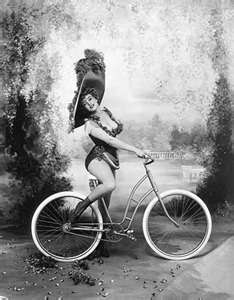 |
| Lillian Russell in a noted photograph. |
Incidentally, Lillian only got to pedal the bicycle in public on a single occasion. On a beautiful spring day in New York City she decided to take the amazing bike for a spin. She took off on her own, riding down Fifth Avenue in the heart of the city. She was a highly recognizable individual, and rumors of this gold plated, gem encrusted bicycle had appeared in the tabloids of the city. So when people spotted these two things out on the street together, she was quickly spotted and mobbed by hundreds, some say thousands, of people. Several squads of police had to be called to escort her safely back to her home. She was politely asked by the authorities to please not appear on the streets of the city with her bicycle. (Note: someone please help me! I have tried to find out what eventually happened to this bicycle, but have been unable to discover any information. Does anyone know the answer to this question?)
 |
| "Diamond Jim" is given credit for inventing the "bicycle built for two." |
"Diamond Jim" Brady is credited with inventing the "bicycle built for two" in the 1890s. He had one made so that he could go bicycling with the woman he loved, Lillian Russell. And then there was the wildly popular song, "A Bicycle Built For Two," of the 1890s, written as a result of Jim's invention of this device:
"Daisy, Daisy, give me your answer do,
I'm half crazy, all for the love of you,
It won't be a stylish marriage, I can't afford a
carriage,
But you'll look sweet, upon the seat,
Of a bicycle built for two."
Here is a You Tube video of Nat "King" Cole
singing the song while pictures of bicycles built
for two are presented.
Jim said of his extravagant attempts to lure Lillian Russell into marriage with him, "It's fun to be a sucker - if you can afford it." He could.
 |
| Jim didn't mind being a "sucker" for Lillian Russell. |
One restaurant owner referred to Jim as, "the best 25 customers I ever had."
Jim was known in New York City as the first person there to own an automobile (1895). With his typical style, he announced in the newspapers that he would be driven by his chauffeur at a particular time down a busy street near his mansion. Thousands turned out to see "Diamond Jim" take a drive in this new form of transportation.
 |
| 1890s automobile similar to Jim's. |
James Buchanan Brady died in 1917 at the age of 61. His eating habits had finally caught up with him. Some say he ate himself to death when he realized Lillian Russell would never marry him. He died in his sleep of either a stroke or heart attack. An autopsy revealed that his stomach had been stretched to 5-6 times its normal size. Having no close family or children, most of his fortune was given in his will to Johns Hopkins Medical School in Baltimore, Maryland, and was used to create the James Brady Urological Clinic.
 |
| Johns Hopkins University Hospital. |
Some historians and restaurant critics have accused Jim of being a gastronomical FRAUD! No person, they say, could possibly eat that much on a daily basis. True, he was 6' tall and weighed 250 lbs., but are all those stories true? Some psychologists have commented that Jim was, basically, just an unhappy fat man who drowned himself in food.
 |
| What is the truth about the extravagant stories concerning "Diamond Jim" Brady? |
At his death, his jewelry collection was worth (in today's money) over $50 million. He had accumulated the greatest collection of gems in all of the United States. The jewels were sold at auction, the stones being taken out of their elaborate settings, and sold separately, or set in smaller rings and/or settings. One recent report says: "Many a woman today, without suspecting it, is wearing a stone that once enhanced the expansive charms of Diamond Jim."
 |
| James Brady's burial site. |
As for Lillian Russell, she lived on until 1922. She was 62 years old that year, and had an accident in which she suffered a severe fall which caused extensive internal injuries. She was a devout Christian Scientist and refused to consult with a physician or receive any medical attention. She felt that prayer was the only medicine she needed in order to get well. Despite her fervent belief, she died soon thereafter of complications. She lived from 1860 to 1922, and was very famous in her time, but is little known today. Only a few generations ago, she was still remembered as a star of the stage. In the 1950s, Marilyn Monroe duplicated a photo which Lillian Russell had taken of her on a bicycle.
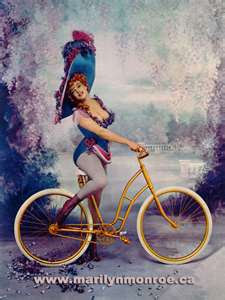 |
| In Marilyn Monroes day, the 1950s, Lillian Russell was still remembered for her talent and star quality. Here, Marilyn duplicates the photo of Ms Russell shown above. |
AND FINALLY:
 |
| Many thanks to John Burke whose 1972 book Duet in Diamonds, a dual biography of "Diamond Jim" and Lillian Russel, was a fantastic read and the inspiration for this post. I highly recommend it. |
FINIS.







